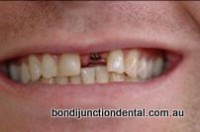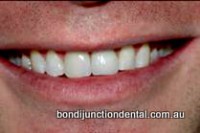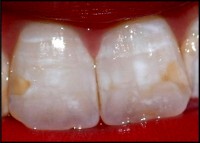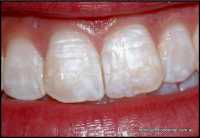Tooth Whitening
Tooth whitening is an easy and safe procedure to lighten structurally sound teeth.
White fillings and porcelain crowns will not change colour when natural teeth are whitened and will need to be replaced if the patient wants lighter coloured teeth in the future.
As most people prefer to have lighter coloured teeth, it is advisable to lighten teeth before starting any new anterior aesthetic dental work so that the new restorations match the lighter natural teeth.
Multiple whitening techniques may need to be used depending on the patient’s individual problems.
- Home Application: Impressions are taken, upper and lower vacuum formed trays are made to fit your teeth. Whitening jells are applied inside the trays at home for 1 hour a day for about 2 weeks. This technique is the most colour stable.
Once a complete course of whitening has been completedTouch up jells are available for patients requiring only for 1-2 hours of application each year.
The vacuum formed trays can also be used to deliver topical medicines to teeth to help re- mineralize and desensitize teeth if required. - Chair Side: Chair side applications deliver good initial results rapidly with 1 to 2 hours. Suitable for people who need a result in a hurry. Chairside applications are not as colour stable as the take home technique. There is a 30 to 40% drop off in colour over a six months period unless some home application is used.For best results chairside bleaching needs to be followed by about 6 hours (one hour a day) of home useing a special bleaching tray to stabilize the colour. This technique is slightly more expensive as it is a combination of two techniques.
Complex Anterior Aesthetic Restorative Cases
In Peter’s complex case a number of techniques were used in combination with implants, crowns and veneers. Peter’s treatment plan involved whitening his teeth, removal of his fractured upper front tooth, placing an implant into the extraction site, a temporary denture for 3 months was worn and finally an implant supported crown and a veneer on the adjacent front tooth was placed.

Mid treatment: Implant placed

After: Tooth whitening, implant crown and veneer

